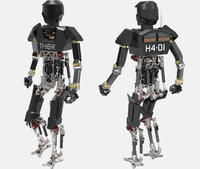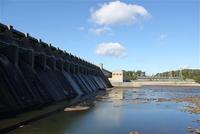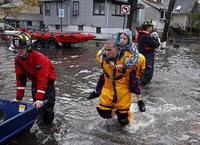-
U.S. tax code has minimal effect on CO2, other greenhouse gas emissions
Current federal tax provisions have minimal net effect on greenhouse gas emissions, according to a new report from the National Research Council. The report found that several existing tax subsidies have unexpected effects, and others yield little reduction in greenhouse gas emissions per dollar of revenue loss.
-
-
Life on Earth will end 2.8 billion years from now due to increasingly luminous Sun
All species have finite lifetimes, with each eventually facing an event that leads to its extinction. . Ultimately, a combination of slow and rapid environmental changes will result in the extinction of all species on Earth, with the last inhabitants disappearing within 2.8 billion years from now. The main driver for these changes will be the Sun. As it ages over the next few billion years, the Sun will remain stable but become steadily more luminous, increasing the intensity of its heat felt on Earth and warming the planet to such an extent that the oceans evaporate.
-
-
El Nino unusually active in the late twentieth century: study
Spawning droughts, floods, and other weather disturbances world-wide, the El Niño-Southern Oscillation (ENSO) impacts the daily life of millions of people. During El Niño, Atlantic hurricane activity wanes and rainfall in Hawaii decreases while Pacific winter storms shift southward, elevating the risk of floods in California. The ability to forecast how ENSO will respond to global warming thus matters greatly to society.
-
-
Improving crop resilience, yields in a world of extreme weather
Farmers in the United States witnessed record-breaking extremes in temperature and drought during the last two summers, causing worldwide increases in the costs of food, feed and fiber. Indeed, many climate scientists caution that extreme weather events resulting from climate change is the new normal for farmers in North America and elsewhere, requiring novel agricultural strategies to prevent crop losses. UC Riverside-led research team develops new chemical for improving crop drought tolerance.
-
-
The differences between impulsive and predatory murderers
A pioneering study finds distinct differences between two types of murderers: impulsive murderers and predatory, or premeditated, murderers. Impulsive murderers were much more mentally impaired, particularly cognitively impaired, while predatory or premeditated murderers exhibit deeper psychiatric disorders.
-
-
Remote-controlled cockroaches to help in search-and-rescue missions
Researchers are using video game technology to remotely control cockroaches on autopilot, with a computer steering the cockroach through a controlled environment. The researchers are using the technology to track how roaches respond to the remote control, with the goal of developing ways that roaches on autopilot can be used to map dynamic environments — such as collapsed buildings.
-
-
Robots to assist humans in mitigating, recovering from future natural and man-made disasters

The goal of DARPA Robotics Challenge (DRC) is spur development of advanced robots that can assist humans in mitigating and recovering from future natural and man-made disasters. Seven teams will receive DARPA support to compete with an ATLAS Robot in 2013.
-
-
Renewables to surpass gas by 2016 in the global power mix: IEA

An International Energy Agency (IEA) report says power generation from hydro, wind, solar, and other renewable sources worldwide will exceed that from gas and be twice that from nuclear by 2016.
-
-
New laser could help the military see hidden dangers
A new laser that can show what objects are made of could help military aircraft identify hidden dangers such as weapons arsenals far below. The system, which is made of off-the-shelf telecommunications technology, emits a broadband beam of infrared light. While most lasers emit light of one wavelength, or color, super-continuum lasers like this one give off a tight beam packed with columns of light covering a range of wavelengths — a blend of colors. Because this beam is in the infrared region, it’s invisible to human eyes. It can, however, illuminate deep information.
-
-
Transporting diluted bitumen through pipelines does not increase likelihood of release
Scientific study has found that the thick Canadian crude oil, known asdiluted bitumen, whichwould be shipped to the U.S. through the Keystone XL pipleline is no more dangerous than transporting other types of crude oil.
-
-
Environmentalists begin a summer of protest against Keystone project
A coalition of environmentalist groups calling itself “fearless summer” launched what it said would be a series of protests against the Keystone XLL pipeline project. Near the city of Seminole, Oklahoma, members of the group shackled themselves to industrial equipment and disruoted work at Keystone-related construction site. Ten were arrested.
-
-
Steering clear of tipping points – and economic collapses
A new study shows how specific parameters can help us steer clear of tipping points in dynamic systems, such as entire economies. By managing macro-economic parameters, scientists believe it is possible to steer an economy around irreversible changes in its complex dynamics and avert potential economic disasters.
-
-
The future of Colorado River flows
The Colorado River provides water for more than thirty million people, including those in the fast-growing cities of Las Vegas, Phoenix, and Los Angeles. Increasing demand for that water combined with reduced flow and the looming threat of climate change have prompted concern about how to manage the basin’s water in coming decades.
-
-
Policy, regulatory issues hobble hydropower as wind-power backup

Theoretically, hydropower can step in when wind turbines go still, but barriers to this non-polluting resource serving as a backup are largely policy- and regulation-based, according to researchers.
-
-
The contribution of social bonds to resilience in the Wake of Superstorm Sandy

A survey reveals new information about the importance of social and community bonds in recovery from a disaster like Superstorm Sandy. The survey data illustrate how important the help of friends, family, and neighbors can be in getting people back on their feet after natural disasters. These crucial social bonds are often overlooked as policy discussions tend to focus on the role that official institutions have in fostering resilience.
-
More headlines
The long view
Autonomous Vehicle Technology Vulnerable to Road Object Spoofing and Vanishing Attacks
Researchers have demonstrated the potentially hazardous vulnerabilities associated with the technology called LiDAR, or Light Detection and Ranging, many autonomous vehicles use to navigate streets, roads and highways. The researchers have shown how to use lasers to fool LiDAR into “seeing” objects that are not present and missing those that are – deficiencies that can cause unwarranted and unsafe braking or collisions.
Tantalizing Method to Study Cyberdeterrence
Tantalus is unlike most war games because it is experimental instead of experiential — the immersive game differs by overlapping scientific rigor and quantitative assessment methods with the experimental sciences, and experimental war gaming provides insightful data for real-world cyberattacks.
Prototype Self-Service Screening System Unveiled
TSA and DHS S&T unveiled a prototype checkpoint technology, the self-service screening system, at Harry Reid International Airport (LAS) in Las Vegas, NV. The aim is to provide a near self-sufficient passenger screening process while enabling passengers to directly receive on-person alarm information and allow for the passenger self-resolution of those alarms.
Falling Space Debris: How High Is the Risk I'll Get Hit?
An International Space Station battery fell back to Earth and, luckily, splashed down harmlessly in the Atlantic. Should we have worried? Space debris reenters our atmosphere every week.
Testing Cutting-Edge Counter-Drone Technology
Drones have many positive applications, bad actors can use them for nefarious purposes. Two recent field demonstrations brought government, academia, and industry together to evaluate innovative counter-unmanned aircraft systems.
Strengthening the Grid’s ‘Backbone’ with Hydropower
Argonne-led studies investigate how hydropower could help add more clean energy to the grid, how it generates value as grids add more renewable energy, and how liner technology can improve hydropower efficiency.
